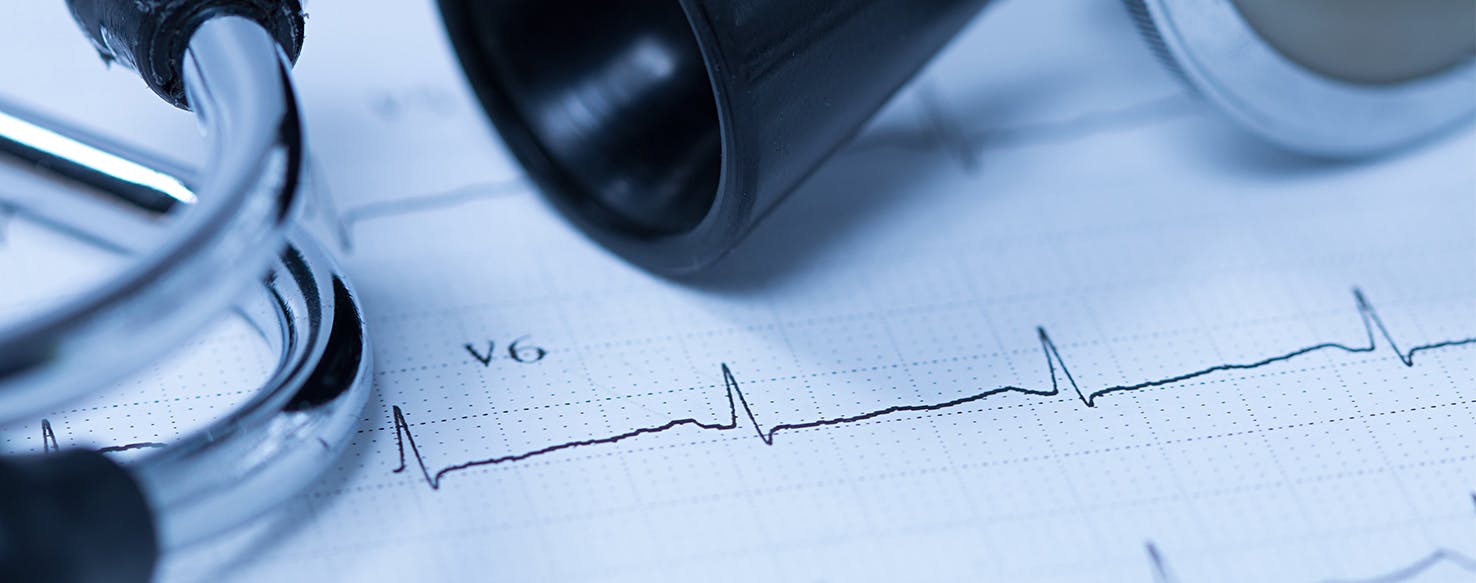
By Amy Caldwell
Published: 10/02/2017, edited: 10/17/2021
Save on pet insurance for your pet
You don't have to choose between your pet and your wallet when it comes to expensive vet visits. Prepare ahead of time for unexpected vet bills by finding the pawfect pet insurance.
Electrocardiograms are non-invasive procedures that register recordings of the electrical activity within your dog's heart. These screenings are safe for your dog and easy to perform at your veterinarian's office. Your veterinarian will use electrodes placed on your dog's skin over the chest and legs and measure the rhythm of their heart while noting any arrhythmias or abnormalities in your dog's heartbeat. Electrocardiograms can identify murmurs and heart disease. There may be several reasons for your veterinarian recommending an electrocardiogram for your dog.
Why Would My Dog Need an Electrocardiogram?
Your veterinarian would recommend an electrocardiogram if your dog has experienced shortness of breath, lethargy, or is excessively tired after exercise or short, brisk walks. If your dog has fainted or lost consciousness or appears to be dizzy and weak, your veterinarian may request an electrocardiogram to view the heart's activity levels and monitor your dog's heart rhythm.
Why Would My Dog Need an Electrocardiogram?
The electrocardiogram will give your veterinarian a snapshot of electrical rhythm in your dog's heart. This test will reveal any abnormalities or arrhythmias in the heart. Electrical problems within your dog's heart can be a symptom of diseases and can also cause irregular heartbeats, fatigue, and lethargy. An EKG, or electrocardiogram, does not tell everything your veterinarian may need to know about your dog's heart. Depending on the screening, your veterinarian may still recommend ultrasounds, echocardiograms, or even x-rays to determine a full diagnosis.
What is the Electrocardiogram Procedure?
An electrocardiogram is a simple procedure performed in your veterinarian's office. Your dog does not have to be sedated or under anesthesia. Your veterinarian will require an EKG machine. A vet tech and your veterinarian will position your dog either standing or lying on their right side for easy access to the heart. Conductive materials such as alcohol or a gel are applied to the skin where the electrodes will clip to help support a strong electrical activity from your dog's heart to the machine. Thin wire cables will lead from each clip to the EKG machine, which will read the electrical activity of your dog's heart. A typical electrocardiogram screening takes under two minutes to screen with the entire procedure, from start to finish, under ten minutes. Once the screening is complete, the EKG machine will print out a graph-like form for your veterinarian to interpret and report the results to you.
An Important Diagnostic Tool
Electrocardiograms are used as a diagnostic tool to help your veterinarian determine causes based on symptoms your dog is experiencing. The heart is a vital organ of your pooch's body required to keep blood and oxygen pumped throughout the core and limbs. An electrocardiogram will help measure the efficiency of your dog's heart while also reporting any abnormalities or arrhythmias within the heartbeat. This machine and the screening performed could help your veterinarian decide on next steps for a proper diagnosis. An EKG can help your veterinarian understand what is going on with your dog's heart so he can better help your dog to feel well.
You may also like
